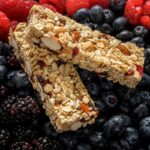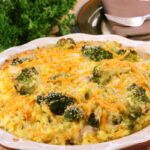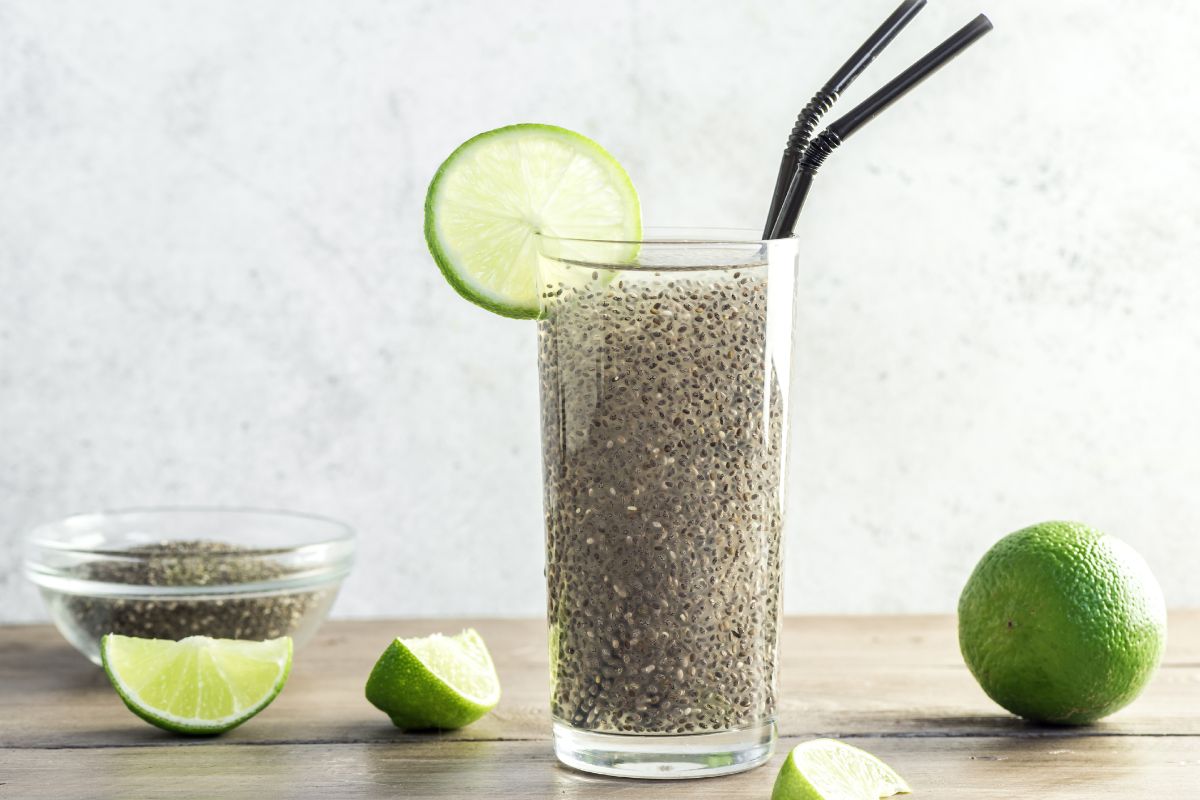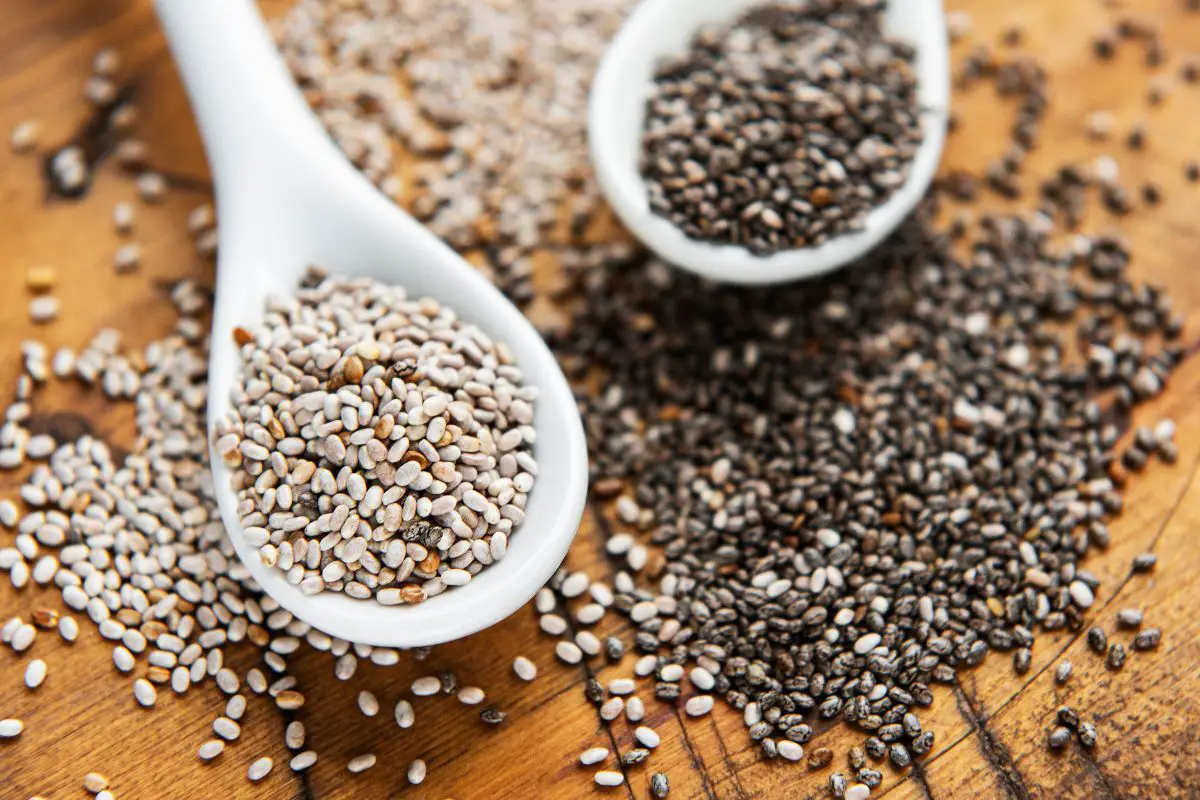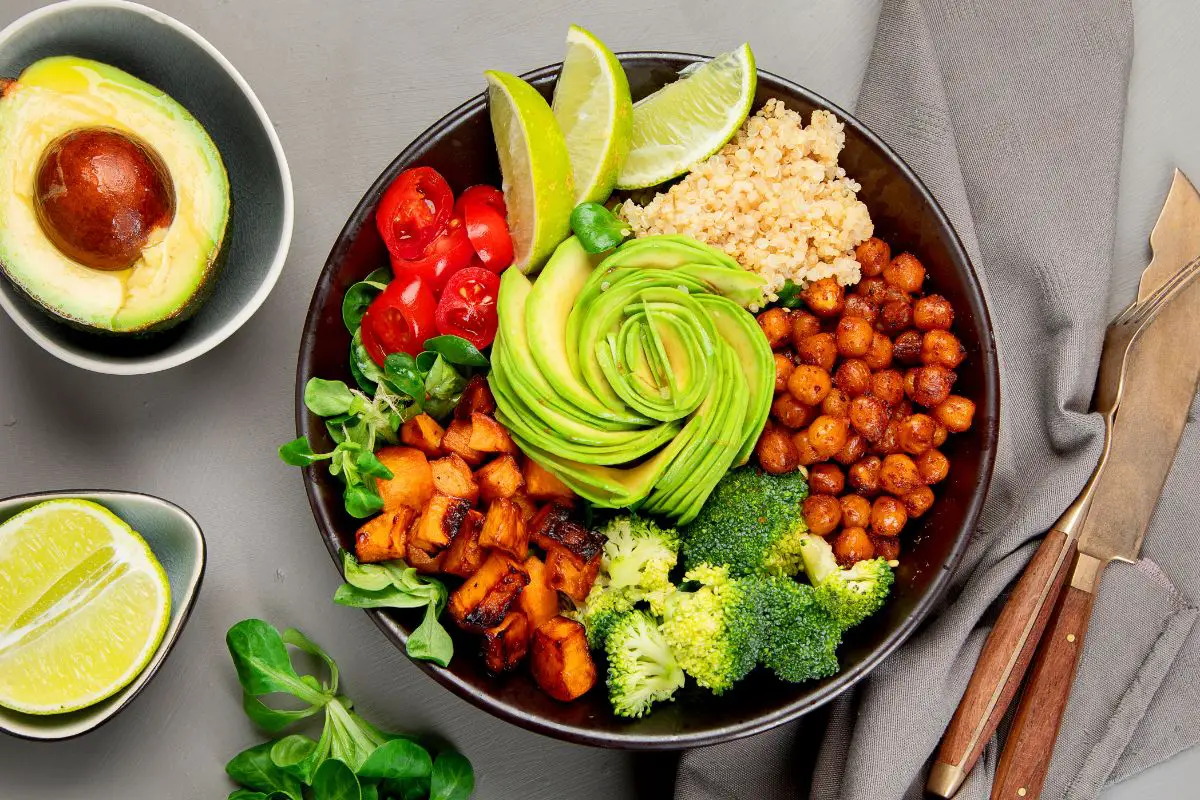The demand for chia seeds in the healthy food industry is rising. These tiny seeds have gained a reputation as a “superfood” because of their potent nutritional value.
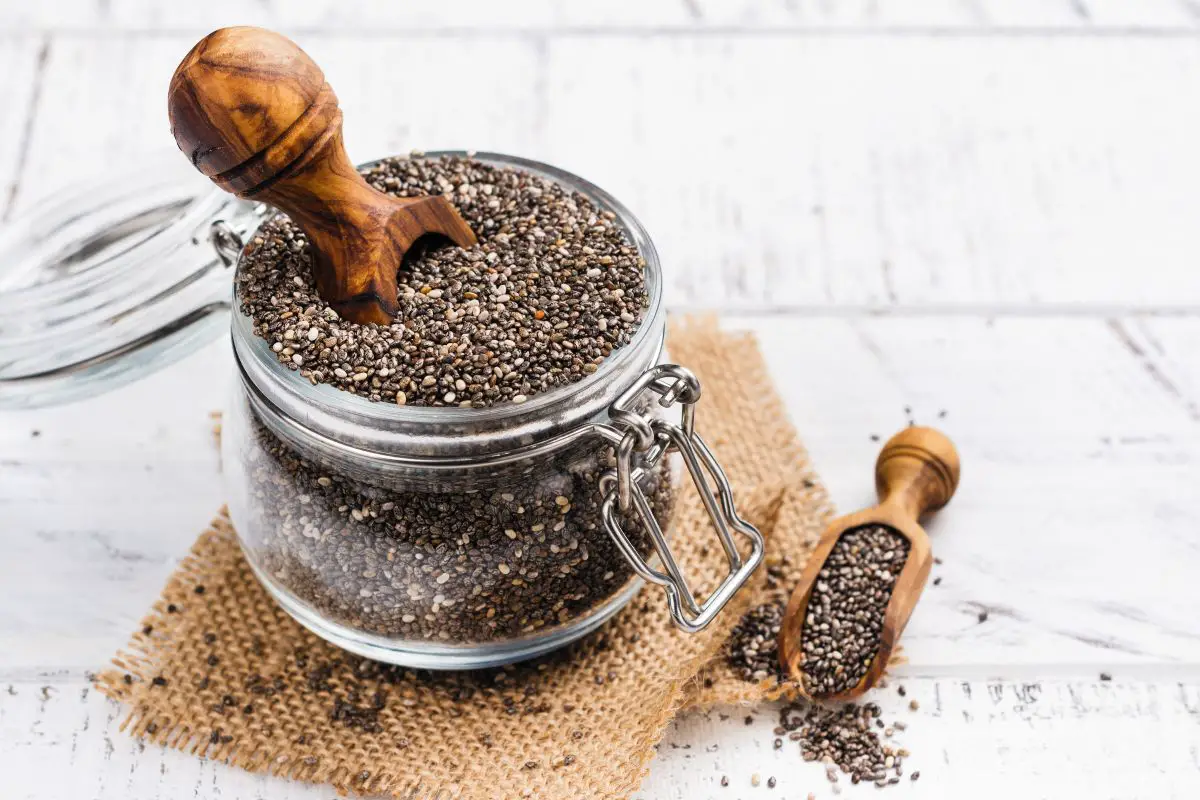
Salvia hispanica, a desert-dwelling plant that belongs to the Lamiaceae, or mint family, is the source of chia seeds. Chia is a Mayan word that means “strength” in English.
Chia seeds appear brown when they are raw and unripe; after maturing, they turn black or white. The nutritional value and flavor of the seed are unaffected by the color.
In addition to their numerous health advantages, chia seeds may be used in a number of ways while baking and cooking.
They are simple to cook and can be added to a variety of meals, and they have all the Omegas as well as a whopping quantity of protein, fats, and fiber.
Chia seeds are now available in all supermarkets. Just keep an eye out for the wholefood sections. They can also be found in the self-serve sections of the majority of bulk food stores.
Chia seeds are quite a potent superfood with a wealth of health benefits, including calcium for strong bones and fiber for smooth digestion.
This comprehensive guide on chia seeds describes how to consume them, how to use them, why they’re so healthy, and what you should look for when purchasing them.
The Origins Of Chia Seeds
The seeds have a long history, with evidence that they were a staple of the daily diet of the early Aztecs as soon as 3500 BC. From 1500 BC onward, the Toltec as well as Teotihuacan inhabitants of Mexico grew and gathered chia seeds.
Chia seeds were previously employed by the Aztecs as well as other South American tribes for a variety of functions beyond eating, and were highly regarded for their ability to be safely preserved for a long time – perfect for long journeys.
It was utilized as a component of some beverages, extracted for oil, processed into flour, and made into a number of medications.
Aside from their numerous beneficial uses, some ancient civilizations also revered chia seeds as sacred and believed them to have mystical qualities. Chia seeds were used by the Aztecs in various religious and sacrifice rituals.
There are currently indigenous people in South America who extol the health and energy-giving virtues of chia seeds. The soldiers of other indigenous tribes credited their physical strength and prowess to consumption of chia seeds.
Iskiate, a beverage produced by combining chia seeds and lemon juice with water, is credited with giving the Tarahumara tribe of Mexico its reputation for producing extraordinarily quick runners with tremendous stamina.
Chia seed cultivation and consumption were outlawed when Spanish colonists started settling Mexico and other parts of South America since it was used in the religious rituals of the indigenous people.
Fortunately, it reappeared in some parts of Mexico that had escaped the colonists’ purge.
Chia Seeds Nutritional Information
Chia seeds are now recognized for a variety of health advantages because of their nutritional richness, in addition to its historical relevance as a food with therapeutic and health-promoting effects.
Chia seeds have about 11 g fiber, 9 g fat, 177 mg of calcium, beneficial fatty acids, and vitamin D, A, E & B (28 grams). Chia seeds also contain significant amounts of magnesium, thiamine, iodine, iron, sulfur, and sulfur.
High fiber foods are excellent for digestion and play a big part in controlling insulin levels within the body, (see also: Full Body Food Cleanse: 9 Ways To Rejuvenate Your Body)which naturally balances blood sugar levels. Foods high in fiber can promote regular bowel motions and ease constipation.
Because they contain soluble fiber, chia seeds transform into something that resembles gel when consumed. This gel-like substance subsequently serves as a prebiotic that promotes probiotic production in the gut.
These seeds are also incredibly rich in antioxidants, including vitamin E, and have 10,000 times the ORAC of vitamin E analogues like gel capsules and omega 3 fatty acids.
Chia Seeds: Are They Paleo-Friendly?
The Paleolithic diet, sometimes known as the “Paleo diet,” is based on a single straightforward idea.
Dieters must consume only foods that hunter-gatherers in the Paleolithic age could have obtained and must abstain from those that were unavailable to them.
Veggies, fruits, seeds, nuts, shellfish, and meat were the main foods that people in the Paleolithic era consumed.
The diet forgoes things like packaged foods and sugary snacks, which have only lately emerged and are in part to blame for the rise in obesity rates.
All grain-based meals, such as pasta, bread, and so on, are off the menu because the agricultural revolution has not yet taken place.
Additionally, it is advisable to stay away from dairy, alcohol, and sweets of any kind. However, individuals who find it difficult to give up alcohol and sweets might occasionally indulge in honey and red wine (see also “Settembre Cellars Winery Review“).
With the Paleo diet, eating nuts occasionally is suggested because they often contain good fats as well as omega 3.
They shouldn’t be consumed in excess, though. Chia seeds are a suitable snack or ingredient because the Paleo diet also promotes the eating of seeds.
Chia Seeds: Are They Keto-Friendly?
Since the 1920s, the ketogenic diet, often referred to as the keto diet, has gained popularity. It is founded on comprehending important concepts in physiological and nutritional science.
In order to change the body’s primary energy source and aid in weight loss, decrease blood sugar, and increase energy levels, the keto diet comprises limiting carbohydrates.
By reducing carbohydrates, the body starts to use fat instead of glucose, and eventually reaches a state known as a ketogenic state.
Up to 80% of daily calories should come from foods high in healthy fats, which should make up the majority of the diet.
The healthy fat principle of the diet includes butter (from grass-fed cows), olive oil, some nuts, seeds, palm oil, and coconut oil.
On the keto diet, meals should be mostly composed of low-starch vegetables including leafy greens, cruciferous vegetables, cucumbers, and zucchini as well as high-protein meat, fish, bone broth, and some full-fat dairy products, ideally raw.
Sugary foods and drinks, refined carbohydrates, foods based on grains, and other widely consumed foods high in carbs should be avoided or only occasionally taken.
On the keto diet, nuts and seeds would both be permitted foods. Chia seeds, however, must be ingested in moderation as they can have up to 2 g of carbs per two tablespoons.
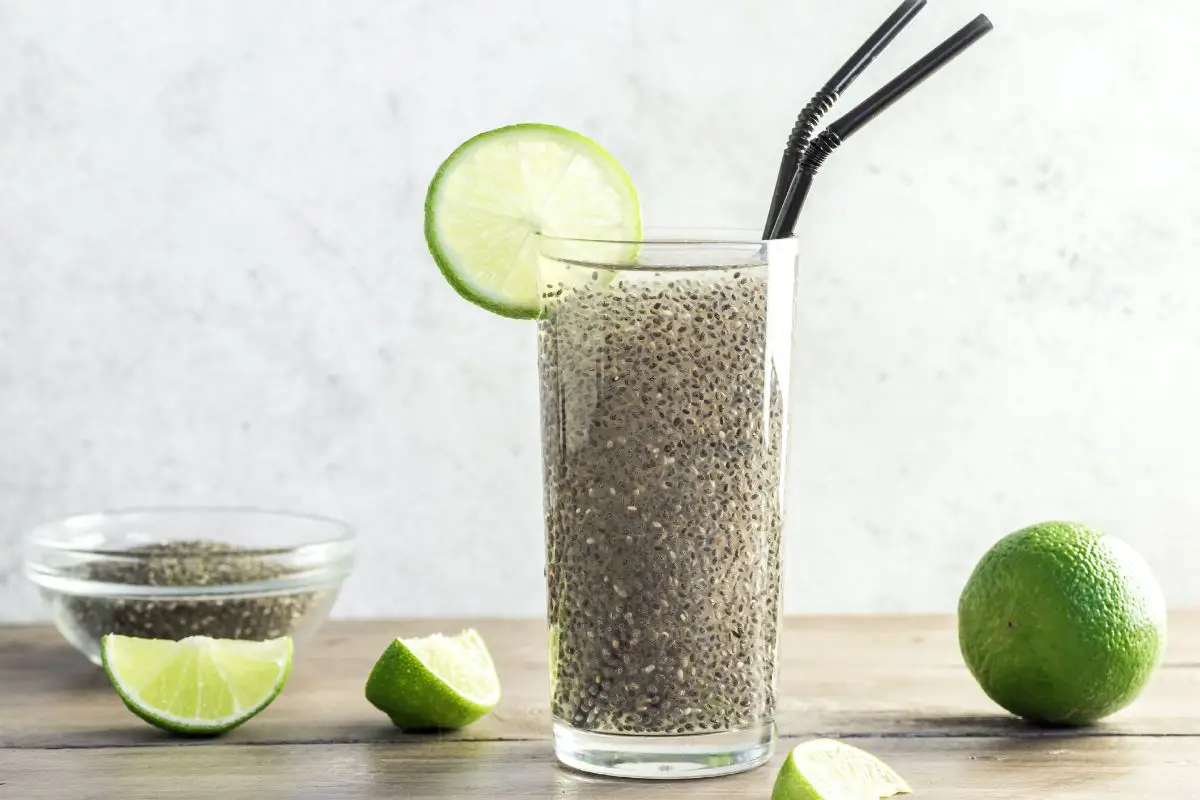
Chia Seeds: Are They AIP-Friendly?
The goal of the autoimmune protocol diet, often known as the AIP diet, is to decrease, ameliorate, or completely eliminate the symptoms of autoimmune disorders that may be made worse by consuming so-called inflammatory foods.
The diet entails consuming foods that are nutrient-dense and support the growth of beneficial bacteria in the gastrointestinal tract while completely avoiding or reducing foods that are allergic and may aggravate the symptoms of an autoimmune disorder by irritating the gut.
It is best to completely avoid foods that contain gluten, grains, dairy, sugars, alcohol, nightshade vegetables (including tomatoes), eggs, nuts, and seed-based oils.
All other vegetables, meat, and fish, as well as fermented foods (soy products excluded), are all suitable for consumption.
Chia seeds should not be taken as seeds, nuts, or nut-based foods of any type, such as oils, are restricted on the AIP program as they can lead to gastrointestinal aggravation.
Advantages Of Chia Seeds For Health
Chia seeds offer a number of linked health advantages and, if consistently ingested, can improve several health concerns since they are rich in omega 3 and important vitamins, minerals, and nutrients.
The US Dietary Recommendations advise people aged 50 or younger to strive to consume roughly 30 g and 25 g of fiber daily, respectively.
Fiber intake is vital for health. The majority of people only take in half or less of the daily recommended amount of fiber.
A serving of 28 grams of chia seeds has 10 grams of fiber, which is over half the amount for women and around a third for men. High-fiber diets also help lower dangerously high cholesterol levels.
Controlled studies have shown that consuming just 10 more g of fiber per day can lower cholesterol levels, lower the likelihood of developing type 2 diabetes, and lower the risk of coronary heart disease.
Rats fed chia seeds together with a high-sugar diet evaded the insulin resistance characteristic of diabetes, according to a study looking at the impact of chia seeds upon diabetes in rats.
When rats with diabetes were given chia seeds as well as a high-sugar diet, they managed to fully recover in just two months.
Chia seeds have been discovered to provide the same boost of energy as a sports drink that is loaded with sugar.
Both groups of runners had identical running times after receiving either plain Gatorade or a combination of Gatorade and a fluid created from chia seeds, according to a study.
However, the group that received pure Gatorade unnecessarily increased their sugar intake.
Eating Chia Seeds
One chia seed can retain more than ten times its own weight in liquid and can be used to make a drink, eaten on its own, or added to a dish. Chia seeds lack a very unique flavor despite being nutrient-dense.
Chia seeds can be bought in large quantities and kept in a dry, cold environment because they have a very long lifespan (one of the qualities that made it so well-liked among ancient civilizations).
Chia seeds that haven’t yet ripened typically have a brown color and a bitter flavor. When chia seeds are black, white, or even a mottled combination of the two colors, they are mature and suitable for eating.
Chia seed pudding is one of the most widely used chia seed recipes. Chia seed pudding only needs a few ingredients and can be made quickly and easily.
You should combine a quarter cup of the chia seeds with your preferred liquid, usually coconut milk, almond milk, and fruit juice, and let the mixture sit for 15 to 20 minutes, to ensure that the chia seeds completely absorb the liquid and solidify into a gel.
Chia seed pudding can be customized to your preferences using a variety of recipes that include extra components like particular spices, fruit chunks, almonds, and more.
It can be kept for a maximum of three days if refrigerated. Some recipes specify that the mixture should be chilled overnight to improve flavor.
In addition, chia seeds can be added to a variety of beverages, including cow or nut milk, smoothies, and juices.
Consuming chia seeds in liquid state is an easy and tasty method to increase your everyday fiber intake because they are full of fiber but have minimal flavor.
Chia seeds may be used with almost any type of liquid since they are so highly absorbent; there are recipes for everything from chia seed lattes through to chia seed frozen fruit smoothies.
The majority of recipes call for soaking the chia seeds in your preferred liquid, such as juice, milk, etc., until they swell and become gelatinous, and then mix them with the other ingredients specified in your recipe of choice.
The chia seeds could be left for fifteen minutes or overnight, depending on the drink’s formula.
Chia seeds may also be added to ordinary water to make a drink that will give you more energy.
A 12 ounce cup of water and one tbsp of chia seeds could be combined and allowed to sit for 10 to 15 minutes, to ensure that the seeds have become gelatinous.
While the mix can be enjoyed as is, adding lime juice can boost the drink’s antioxidant capacity. You can also add a teaspoon of a nectar of your choosing for sweetness and taste.
Chia seeds become simpler to digest when they are soaked in water and then the gelatinous combination is used as a component in other recipes.
Due to the absorbent qualities of chia seeds, it is advised to stay hydrated even if the seeds can be consumed on their own without any drink.
Allow 5 teaspoons of chia seeds to soak in a pitcher of water in the refrigerator for an entire night to create a straightforward chia seed combination that can be quickly added to juices, smoothies, salad dressings, and more.
The liquid can simply be divided into pieces and taken as needed once it has become gelatinous. Refreshing chia seed water can be kept for up to a week in the refrigerator.
Final Thoughts
Chia seeds offer a veritable powerhouse of nourishment. The nutrients in each small seed are substantial. Two teaspoons is the typical serving size, and once the chia seeds are soaked, they yield a substantial amount.
Chia seeds are a great source of calcium, fiber, protein, healthy fats, and antioxidants. Antioxidants shield the good fats, preventing rancidity even when left at room temperature.
Omegas 3, 6, & 9 are also abundant in chia seeds, though predominantly Omega-3s. Their nutrients and vitamins reduce cholesterol and blood pressure as well as the risk of diabetes and heart disease.
They also contain minerals like calcium and phosphorus that are good for your bones. So, why wait? Take some of the advice above and start including chia seeds in your diet today!
- How To Make A Paleo Detox Smoothie: Berry Cherry Green Edition - April 18, 2023
- How To Make Spicy Paleo Paprika And Thyme Veggie Fries - April 18, 2023
- 15 Mouthwatering Keto Apple Recipes You Need To Try Today - April 18, 2023

